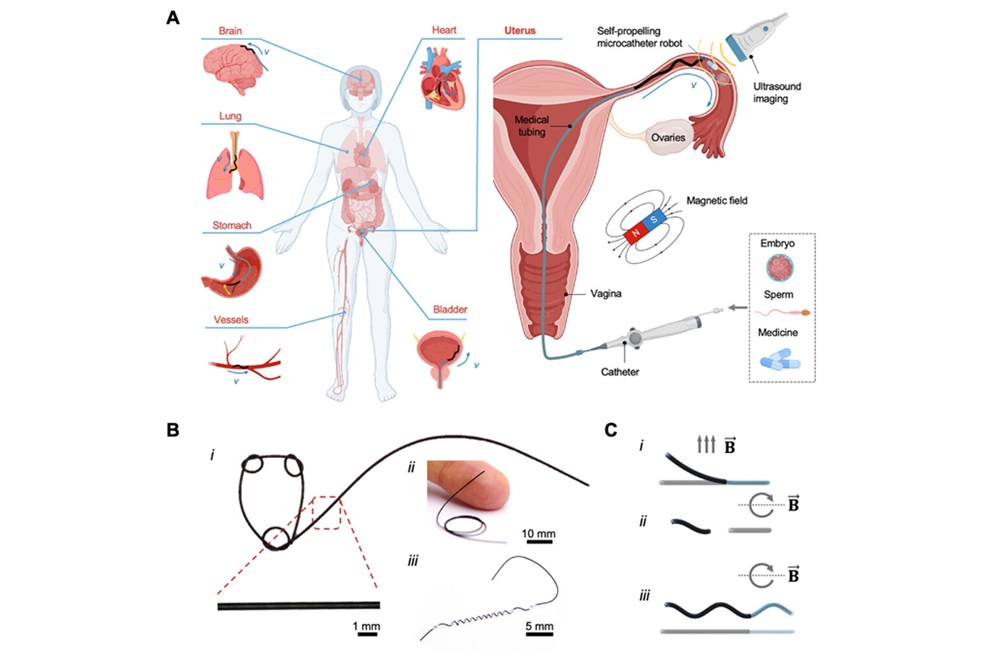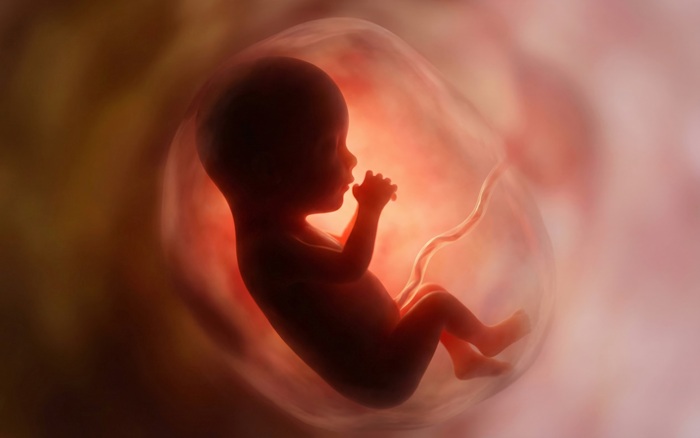Hormone Replacement Therapy Preserves Joint Implants
|
By HospiMedica International staff writers Posted on 23 Feb 2015 |
A new study reveals that hormone replacement therapy (HRT) is associated with an almost 40% decrease in the rate of revision surgery for hip and knee implants in women.
Researchers at the University of Oxford (United Kingdom), Universitat Autònoma de Barcelona (UAB; Spain), and other institutions conducted a study of 24,733 women who underwent primary total knee arthroplasty (TKA) or total hip arthroplasty (THA) to examine if HRT could reduce osteolysis and subsequent prosthesis loosening, the most common cause for revision surgery. The researchers explored associations with HRT use for over a year, adherence, and cumulative use and revision risk.
The results showed that the hazard ratio for implant failure fell to 0.62 after six months among HRT users. The risk reduction fell even further, reaching 0.48 for those who continued on HRT for at least a year. The results also showed that higher adherence and therapy duration were associated with further reductions in revision rates, but that preoperative HRT appeared unrelated to implant survival. The study was published in the March 2015 issue of Annals of the Rheumatic Diseases.
“Animal studies have suggested that estrogen deficiency exerts a negative influence on bone tissue around knee implants, while HRT minimizes periprosthetic bone loss and improves bone ingrowth around the implant,” concluded lead author Nigel Arden, MD, of the University of Oxford, and colleagues. “The findings that significant reductions in revision risk were seen among HRT users are encouraging for the research of antiresorptive agents that might improve outcomes following total joint replacement surgery in the future.”
The most common reason for joint replacement failure in the first year post implantation is due to aseptic loosening, which can result from osteolysis in the surrounding bone. While the mechanisms underlying loosening are still obscure, it is widely accepted that periprosthetic bone loss secondary to chronic inflammation and osteoclastic activity is the main pathway.
Related Links:
University of Oxford
Universitat Autònoma de Barcelona
Researchers at the University of Oxford (United Kingdom), Universitat Autònoma de Barcelona (UAB; Spain), and other institutions conducted a study of 24,733 women who underwent primary total knee arthroplasty (TKA) or total hip arthroplasty (THA) to examine if HRT could reduce osteolysis and subsequent prosthesis loosening, the most common cause for revision surgery. The researchers explored associations with HRT use for over a year, adherence, and cumulative use and revision risk.
The results showed that the hazard ratio for implant failure fell to 0.62 after six months among HRT users. The risk reduction fell even further, reaching 0.48 for those who continued on HRT for at least a year. The results also showed that higher adherence and therapy duration were associated with further reductions in revision rates, but that preoperative HRT appeared unrelated to implant survival. The study was published in the March 2015 issue of Annals of the Rheumatic Diseases.
“Animal studies have suggested that estrogen deficiency exerts a negative influence on bone tissue around knee implants, while HRT minimizes periprosthetic bone loss and improves bone ingrowth around the implant,” concluded lead author Nigel Arden, MD, of the University of Oxford, and colleagues. “The findings that significant reductions in revision risk were seen among HRT users are encouraging for the research of antiresorptive agents that might improve outcomes following total joint replacement surgery in the future.”
The most common reason for joint replacement failure in the first year post implantation is due to aseptic loosening, which can result from osteolysis in the surrounding bone. While the mechanisms underlying loosening are still obscure, it is widely accepted that periprosthetic bone loss secondary to chronic inflammation and osteoclastic activity is the main pathway.
Related Links:
University of Oxford
Universitat Autònoma de Barcelona
Latest Surgical Techniques News
- Catheter-Based Procedures Offer Less Invasive Option for Treatment of Valvular Disease
- Laparoscopic Surgery Improves Outcomes for Severe Newborn Liver Disease
- Novel Endoscopy Technique Provides Access to Deep Lung Tumors
- New Study Findings Could Halve Number of Stent Procedures
- Breakthrough Surgical Device Redefines Hip Arthroscopy
- Automated System Enables Real-Time "Molecular Pathology" During Cancer Surgery
- Groundbreaking Procedure Combines New Treatments for Liver Tumors
- Ablation Reduces Stroke Risk Associated with Atrial Fibrillation
- Optical Tracking Method Identifies Target Areas in Robot-Assisted Neurosurgery
- General Anesthesia Improves Post-Surgery Outcomes for Acute Stroke Patients
- Drug-Coated Balloons Can Replace Stents Even in Larger Coronary Arteries
- Magnetic Kidney Stone Retrieval Device Outperforms Ureteroscopic Laser Lithotripsy
- Absorbable Skull Device Could Replace Traditional Metal Implants Used After Brain Surgery
- Magic Silicone Liquid Powered Robots Perform MIS in Narrow Cavities
- 'Lab-on-a-Scalpel' Provides Real-Time Surgical Insights for POC Diagnostics in OR
- Biodegradable Brain Implant Prevents Glioblastoma Recurrence
Channels
Critical Care
view channel
Bioadhesive Strategy Prevents Fibrosis Around Device Implants on Peripheral Nerves
Peripheral nerves connect the brain and spinal cord to muscles, organs, and sensory systems, making them key targets for treating neurological and systemic diseases. However, implantable bioelectronic... Read more
Miniature Non-Invasive Robotic Catheters to Improve Infertility Treatments
Minimally invasive procedures in reproductive and gynaecological medicine are often limited by the difficulty of navigating narrow, delicate anatomical pathways without damaging surrounding tissue.... Read morePatient Care
view channel
Revolutionary Automatic IV-Line Flushing Device to Enhance Infusion Care
More than 80% of in-hospital patients receive intravenous (IV) therapy. Every dose of IV medicine delivered in a small volume (<250 mL) infusion bag should be followed by subsequent flushing to ensure... Read more
VR Training Tool Combats Contamination of Portable Medical Equipment
Healthcare-associated infections (HAIs) impact one in every 31 patients, cause nearly 100,000 deaths each year, and cost USD 28.4 billion in direct medical expenses. Notably, up to 75% of these infections... Read more
Portable Biosensor Platform to Reduce Hospital-Acquired Infections
Approximately 4 million patients in the European Union acquire healthcare-associated infections (HAIs) or nosocomial infections each year, with around 37,000 deaths directly resulting from these infections,... Read moreFirst-Of-Its-Kind Portable Germicidal Light Technology Disinfects High-Touch Clinical Surfaces in Seconds
Reducing healthcare-acquired infections (HAIs) remains a pressing issue within global healthcare systems. In the United States alone, 1.7 million patients contract HAIs annually, leading to approximately... Read moreHealth IT
view channel
EMR-Based Tool Predicts Graft Failure After Kidney Transplant
Kidney transplantation offers patients with end-stage kidney disease longer survival and better quality of life than dialysis, yet graft failure remains a major challenge. Although a successful transplant... Read more
Printable Molecule-Selective Nanoparticles Enable Mass Production of Wearable Biosensors
The future of medicine is likely to focus on the personalization of healthcare—understanding exactly what an individual requires and delivering the appropriate combination of nutrients, metabolites, and... Read moreBusiness
view channel
Philips and Masimo Partner to Advance Patient Monitoring Measurement Technologies
Royal Philips (Amsterdam, Netherlands) and Masimo (Irvine, California, USA) have renewed their multi-year strategic collaboration, combining Philips’ expertise in patient monitoring with Masimo’s noninvasive... Read more
B. Braun Acquires Digital Microsurgery Company True Digital Surgery
The high-end microsurgery market in neurosurgery, spine, and ENT is undergoing a significant transformation. Traditional analog microscopes are giving way to digital exoscopes, which provide improved visualization,... Read more
CMEF 2025 to Promote Holistic and High-Quality Development of Medical and Health Industry
The 92nd China International Medical Equipment Fair (CMEF 2025) Autumn Exhibition is scheduled to be held from September 26 to 29 at the China Import and Export Fair Complex (Canton Fair Complex) in Guangzhou.... Read more














